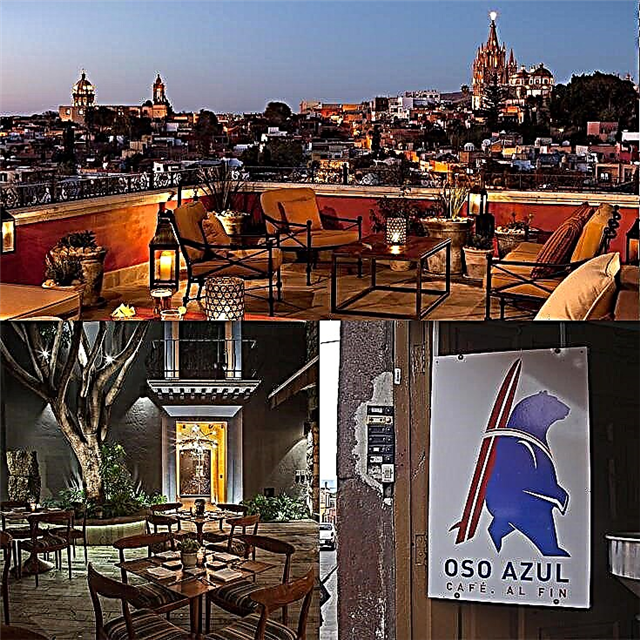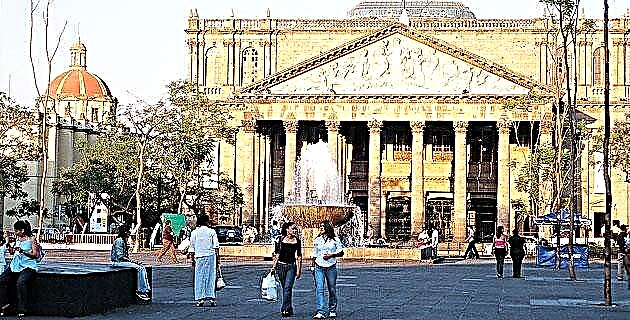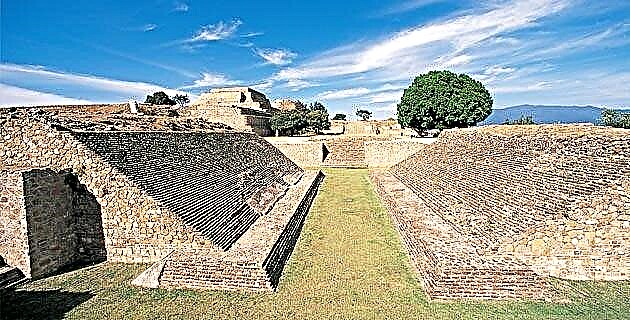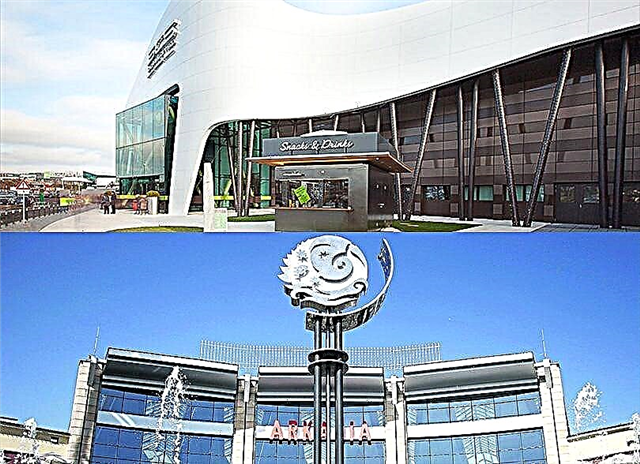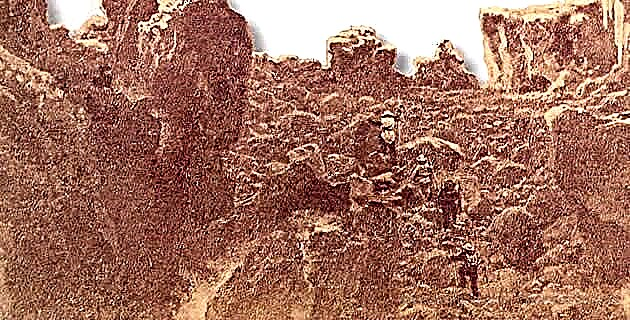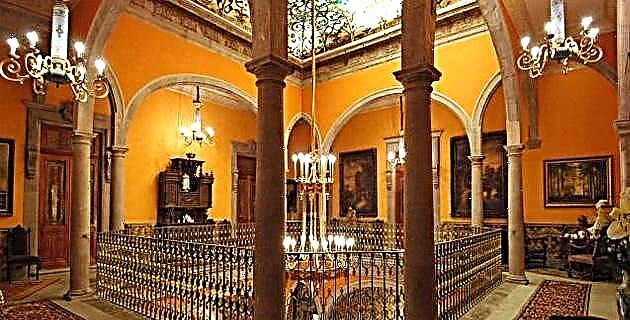
Join us to discover this new concept of lodging, which combines art and history with elegance and comfort. A new architectural heritage of San Luis Potosí, located in the historic center.
We barely crossed the threshold of the mansion and felt that the 19th century was upon us. We left the bustle of the street behind and listened softly to the Estrellita melody by Manuel M. Ponce. We contemplate in front of us an elegant room, which we guessed was the old central patio of the house. The luxury and harmony of the furniture was more than evident and every detail seemed to have been taken care of with meticulous care. Our gaze traveled over the baroque quarry well, the grand piano, the colorful tapestry on the wall and went to finish off the Murano-type glass dome that covers the ceiling. As we advanced towards the living room, we discovered in every corner and on the furniture, works of art, that without being specialists, we dared to think that each piece was genuine. Then we thought we were in a museum, but in reality we were in the lobby of the Palacio de San Agustín hotel-museum.
A divine origin
The story goes that in the 18th century, the Augustinian monks built this palace on an old mansion located in front of the “processional route”, the path that led through the main squares and religious buildings of the city of San Luis Potosí. The house was built in the seventeenth century on the corner that formed the gate of San Agustín (today Galeana Street) and Cruz Street (today 5 de Mayo Street), right between the Church of San Agustín and the temple and convent of San Francisco. After passing through several owners, the property was donated to the Augustinian monks, who, showing off their fame for raising the most sumptuous buildings in New Spain, conceived this palace among luxuries and comforts for their repose and that of their distinguished guests. And the same story relates that among the architectural wonders that the palace possessed, there was a circular staircase by which the monks ascended to pray to the last level of the mansion and they contemplated during the journey, the facade of the church and convent of San Agustin. But all this luxury came to an end and after going through several owners, the mansion deteriorated over time until in 2004, the Caletto Hotel Company acquired the property and again conceived a palace.
More than building a boutique hotel, the intention was to recover the atmosphere that the city of San Luis Potosí lived during colonial times and in the 19th century, create a museum hotel. For this, a great project was drawn up in which - among other specialists - a historian, an architect and an antiquarian participated. The first was responsible for investigating in the archives the historical data regarding the house. The architectural recovery as close as possible to the original design and the adaptation of new spaces, was the task of the second. And the antique dealer was entrusted with the titanic task of searching the villages of France for the ideal furniture for the hotel. A total of four containers loaded with approximately 700 pieces - including cataloged and certified furniture and works of art that are over 120 years old - arrived in Mexico from France. And after four years of hard work, we had the privilege of being here to enjoy this palace.
A door to the past
When I opened the door to my room, I felt the sensation that time was enveloping me and immediately transporting me to the “Beautiful Era” (end of the 19th century until the First World War). The furniture, the lighting, the pastel tones of the walls, but especially the setting, could not suggest anything else to me. Each of the hotel's 20 suites is decorated in a particular way, both in the color of the walls and in the furniture, in which you can find the Louis XV, Louis XVI, Napoleon III, Henry II and Victorian styles.
The carpet in the room, like the ones in the entire hotel, is Persian. The curtains and covers of the beds are similar to those of yesteryear and made with European fabrics. And to spare no frills, the bathrooms were built in one-piece marble. But the detail that surprised me the most was the phone, which is also old, but was digitized to meet current needs. I don't remember for sure how long I spent discovering every detail of the room, until the sound of someone knocking on my door snapped me out of spell. And if I had any doubts about having gone back in time, they were dispelled when I opened the door. A smiling young woman wearing a period costume (all hotel staff dress in the usual way), as I had only seen in the movies, asked me what I wanted for breakfast the next day.
Walking through history
From surprise to surprise, I went through the hotel: the corridors, the different rooms, the terrace and the library, in which there are copies of the 18th century. The painting of the walls is another feat, as it was done by hand by potosí artisans, based on the original designs found in the basements of the mansion. But perhaps the most amazing thing is the helical staircase (in the shape of a helix) that leads to the last level, where the chapel is. As it is no longer possible to see from it the facade of the temple and the convent of San Agustín, a quarry replica of the facade of the temple was built on the wall. And then, like the Augustinian monks, I went up and was observing during the journey, the facade of the temple of San Agustín. Shortly before reaching the end, I began to gently smell the incense and the sound of Gregorian chants. This was just the preamble to a new prodigy; At the end of the staircase, on a point marked with an inscription in Latin, you can see through an oval stained glass window, the tower of the church of San Agustín, forming an impressive natural picture. In the opposite direction and through another window, you can see the domes of the church of San Francisco. All this visual waste is the anteroom to enter the chapel, another of the priceless jewels of the hotel. And it is not for less, because it was brought in its entirety from a town in the French province. The medieval Gothic style lambrin and the gold-plated Solomonic columns of the altar are the greatest treasures.
After dinner, we were invited to board a 19th century carriage in front of the hotel. It was like closing the day with a flourish, as we toured the city at night, enjoying the night lights. Thus we visit the church of San Agustín, the Theater of Peace, the church of Carmen, Aranzazu and the Plaza de San Francisco, among other historical monuments. The clapping of the horse's hooves on the cobblestone filled the narrow streets of the city with nostalgia and the passage of the carriage seemed an image that had been torn from history. Upon returning to the hotel, it was time to enjoy the room again. Ready to sleep, I walked through the thick curtains and turned off the light, then time vanished and silence was present. Needless to say, I slept like few times.
The next morning the local newspaper and breakfast in my room was on time. So I was very grateful to those who made this palace dedicated to art, history and comfort come true. A dream in time come true.
Palace of San Agustín
Galeana corner 5 de Mayo
Historical Center
Tel. 52 44 41 44 19 00

